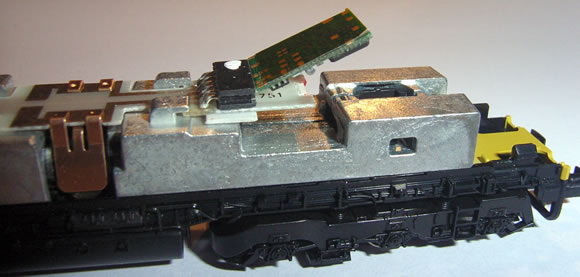In my world, Valkenveld is still a junction where a double-track mainline and a shortline meet. The shortline has a small yard in Valkenveld. Freight trains are classified to serve the various industries on the shortline.
Of course I had to swear an oath that construction will only start as soon as the first module is nearing completion. Otherwise I am destined to start all sorts of projects without finishing anything properly.
Here is the track plan for the layout that will ultimately be 150 x 30cm. In red the tracks of the Inglenook puzzle. In the background I will incorporate an engine facility. This will allow storing and displaying a number of locomotives and use different ones to complete the switching in the yard.
The mainline tracks on module 1 are in principle operational, but will be used for "decoration" purposes only as the tracks will "end" in a mirror under the road bridge.
The modules will be divided by a backdrop. Module 1 having a more natural feel to it as it represents the entrance of the lines to the city of Valkenveld. Module 2 will be more industrial with the yard, engine facilities and various industrial buildings.
The era is modern and the location is The Netherlands close to the German border. Freight trains pulled by big Diesels rule. From time to time the "Valkenveldse Spoor Vereniging (VSV)" runs excursions on the shortline with their NS 2297.
 |
| The track plan with the "Inglenook" tracks marked in red. |
Here more information on the classic Inglenook switching puzzle which was an inspiration for the above track plans (source: wyman):
The trackplan is deceptively simple, consisting of only two points and three sidings.
As with most shunting puzzles, the length of the sidings is determined by the operating rules. In the case of Inglenook Sidings, the longest siding holds 5 wagons, while the two others have a capacity of 3 wagons each.
The headshunt allows for the engine plus 3 wagons (when operating, a total of 8 wagons plus one engine will be used). Even as the lead track on module 1 is much longer than a locomotive plus three freight cars, the operator will not be allowed to run longer trains.
The object of the Inglenook Sidings shunting puzzle is fairly simple, the order for the shunting crew being:
"Form a departing train consisting of 5 out of the 8 wagons sitting in the sidings."In addition (and this is where the "game element" of the puzzle comes in) the shunting order states:
"The 5 wagons are selected at random."On the original Inglenook Sidings, Alan Wright employed what he called the "Tiddlywink Computer" for this task, i.e. distinct tokens for each wagon drawn from a mug. No matter how these 5 items of rolling stock are determined, the order in which this happens is important because:
"The train must be made up of the 5 wagons in the order in which they are selected."
Once the train is formed it will "run" on the shortline to the right. The consist can "come back", a new order is determined and the switching fun can start again.
I am also planning to serve the engine facility with Diesel and maintenance cars to add some more operational extra's.





















